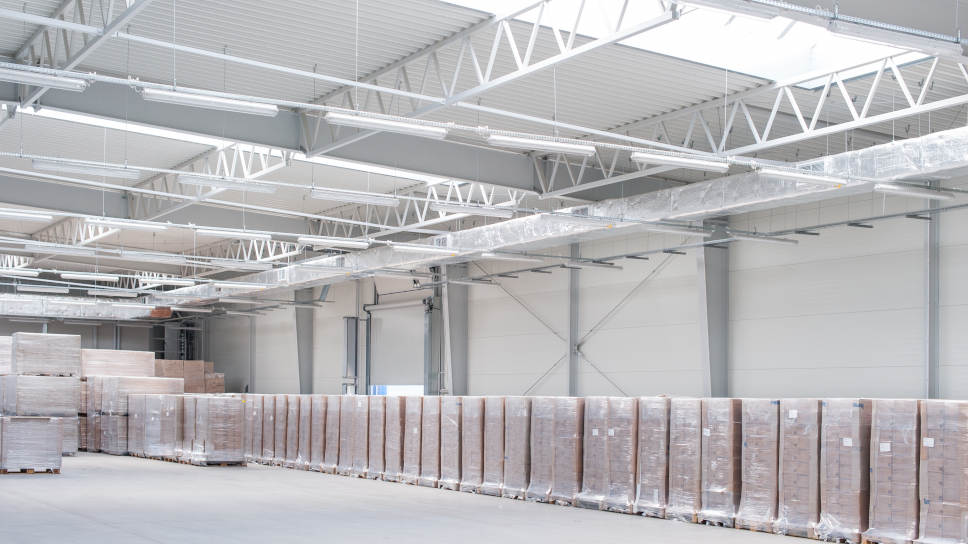How are steel halls insulated?
These halls are most-often insulated in an energy-efficient manner. This is necessary to ensure the best-possible thermal conditions for the proper storage of goods. Thermal insulation is essential for both freight and production halls, because of the production processes and workers’ comfort.
What materials are used to insulate this type of building? Polyurethane foam is most-often used to insulate steel halls. This thermal-insulation product is ideal for insulating the roof from the inside, as well as wall surfaces. Optimal energy efficiency and significant reductions in heating costs are among the many advantages of the PUR foam insulation of halls
Hall thermal insulation with foam — the most-important economic benefits
In the case of freight and production halls, it is important to protect halls against excessive cooling in winter and overheating in summer. A hall’s foam thermal insulation forms a continuous and tight layer, protecting against extreme temperatures. The product fills all gaps and holes, securing against the formation of thermal bridges, and stiffens the structure.
The polyurethane-foam thermal insulation of halls exhibits waterproofing properties — it reduces the probability of water condensation. A minimum 3-cm-thick thermal-insulation layer eliminates metal-sheet “sweating”. Thermal-insulation material is neutral to health and the environment. It does not emit odours or cause allergies. It is suitable for houses in which people with respiratory problems live.
The polyurethane-foam thermal insulation of the hall features a high level of durability. The foam is resistant to moisture and mechanical damage. It is characterised by low water-vapour permeability and thermal conductivity. Both open-cell and closed-cell foams can be used for hall thermal insulation. Closed-cell foam, e.g., Purios H, is more suitable for flat-roofed halls, whereas open-cell foam, e.g., Purios E, sprayed on the membrane, works better for the insulation of sloping roofs.
Steel-hall thermal-insulation speed
The thermal insulation of a steel hall using the spray method is extremely fast. Insulating an area of approx. 300 m2, depending on the applying company, can even take a whole day. Polyurethane foam almost immediately after application complies with all insulation requirements. It can be used to cover an entire roof, including complex elements such as cross battens and rafters. A steel-hall thermal-insulation layer cures rapidly, and forms a rigid, durable, structure.
What is the cost of the PUR-foam thermal insulation of a steel hall?
The cost of steel-hall thermal insulation depends on the polyurethane-foam type and the hall floorage. However, you cannot apply the foam yourself — a qualified specialist is required. You have to add to the material costs the price of the tradesperson’s labour, depending on the region in the country. Choose a suitable and proven operative — only properly applied PUR foam will allow you to enjoy the hall’s effective thermal insulation.

 This website uses cookies. By using this website, you consent to the use of cookies in accordance with your browser settings.
This website uses cookies. By using this website, you consent to the use of cookies in accordance with your browser settings.